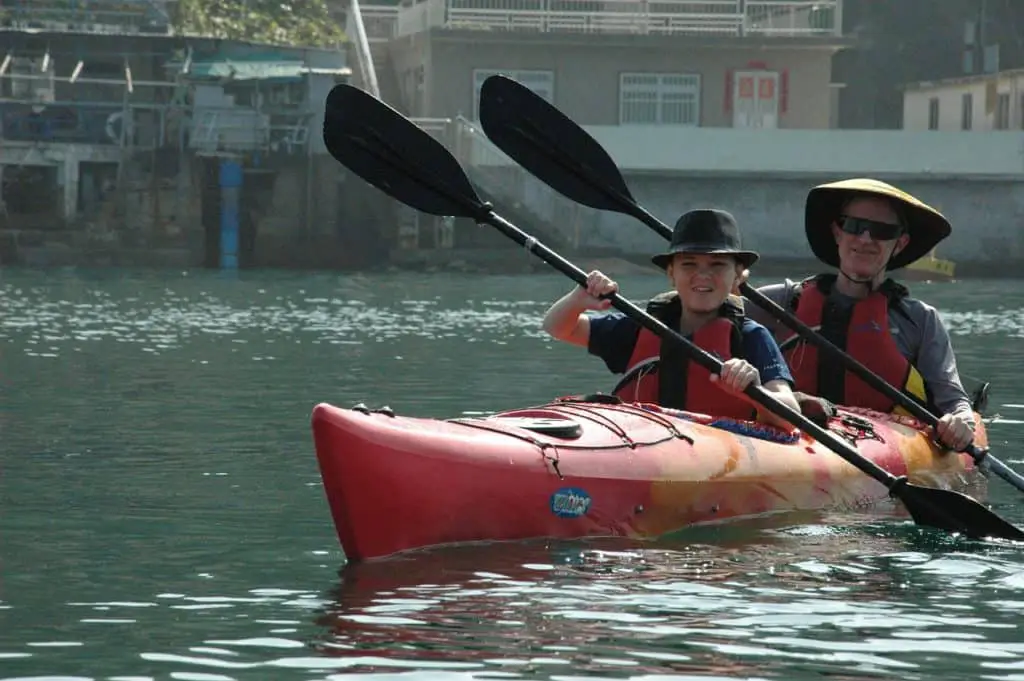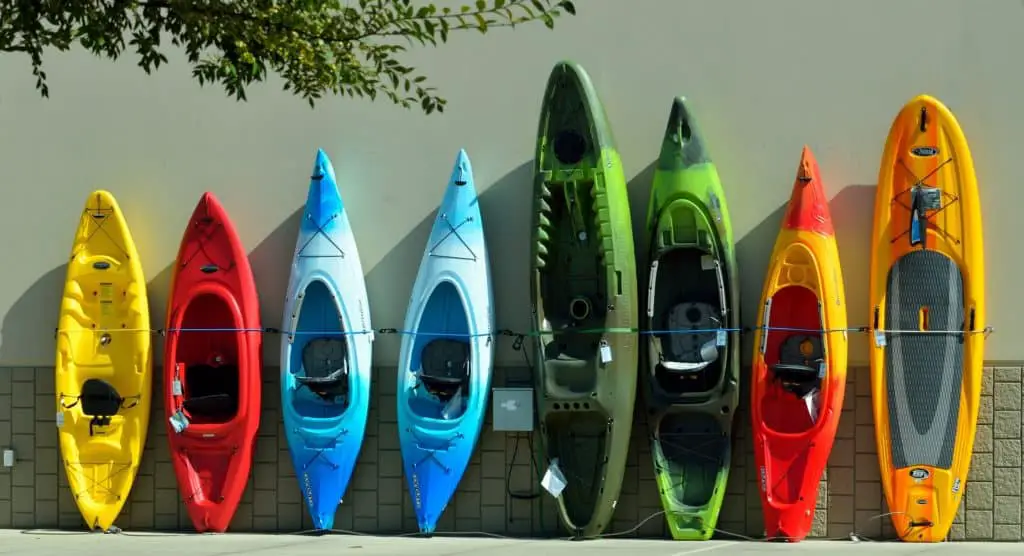When I purchased my first kayak way back when, I noticed that when I tried to paddle through the water my kayak would pull slightly to the left. I bought my kayak specifically for fishing in flat water lakes, so to find my kayak pulling to one side was frustrating, especially when I came to the conclusion that there was no reason why this was happening.
I sat down at my computer and searched for hours to find out why my kayak was pulling to one side. What I found was that quite a few people were having the same problem, but the answer wasn’t always clear cut. So I compiled a list of factors that may cause my kayak to pull to one side.
The number one reason your kayak is pulling to one side is most likely because of your paddling technique. If you are new to kayaking, your paddling skills may be lacking. Paddling may seem like a no-brainer but you would be surprised how little mistakes can cause your kayak to behave oddly. If you’re positive that you’re paddling correctly keep reading for other factors that will contribute to causing your kayak to spin.
Paddle technique

Nine times out of ten, your paddling technique is at fault when your kayak keeps pulling to one side. Knowing how to properly paddle can save you the headache of having to deal with the problems that improper technique can create.
The best way to monitor your paddling technique is to have a friend watch you as you paddle through the water. An experienced kayaker is preferred when finding someone to observe your paddling, but even the average person should be able to spot the most common paddling mistakes.
Here is a basic, inexpensive paddle I recommend using (Amazon.com)
Here are some things you can do to make sure you are paddling correctly:
- Make sure your hand positioning on the paddle is correct. Your hands should be shoulder width apart when holding the paddle.
- Use waterproofed tape to mark where to hold the paddle, doing this will ensure that you consistently hold the paddle the same way every time.
- Keep in mind that the dominant hand is stronger. If you’re right handed, that means that your right side is stronger and may cause you to paddle harder with your right side without you realizing it. Try purposely paddling harder with your off-hand.
- Be aware of how your paddle touches the water. Newcomers and seasoned kayakers alike will often find that their paddle dips into the water a bit more on one side. Try to maintain your normal posture and watch how your paddle dips into the water. The deeper the fin of the paddle goes, the more push is generated from that stroke.
- The distance from the kayak where the paddle sweeps the water is also important. You should make sure that the paddle sweeps the same distance from the kayak on each side. The closer to the kayak the more spin the sweep creates.
Here is a short video showcasing proper paddle technique on a kayak
Be Aware of How Your Body Affects the Kayak

Small adjustments to how your body sits in the kayak can also affect how your kayak moves.
Learn to rotate your hips to maneuver and shift your body weight to make slight adjustments to your kayak while paddling.
Pushing on one footrest too hard while paddling can also cause the kayak to pull slightly to one side. It may sound ridiculous to say, but make sure that you are actually resting your feet on the foot rests and not pushing on one or both of them.
Lastly, keeping your eyes focused on where you are paddling to may help you if you find your kayak spinning or pulling while you paddle. Target fixation is a very real thing and it can also affect your kayaks movement. While target fixation isn’t nearly as dangerous as it is with a motorcycle or similar, it may still leave you subconsciously pulling your kayak to one side while moving
The Wind
Believe it or not, even a small gust of wind can send your kayak into a slight spin. Now I’m not saying that a breeze will send you spinning out of control like you’re on your favorite ride at the amusement park. A windy day can make paddling a kayak quite difficult, especially when it comes to keeping the kayak straight. If you’re having trouble with a spinning kayak, take note of the direction the wind is blowing.
Defective or Damaged Kayak

When your kayak constantly pulls to one side, you may not be the problem. It happens, sometimes kayaks with defects slip through the production process or your kayak may become damaged. Rather your kayak is old or new, defects and damage will always be something to consider.
Testing Your Kayak
The best way to check to see if you are causing your kayak to pull to one side is to get with a buddy and have them “test drive” your kayak. While your friend takes your kayak for a ride, hop in theirs. Does your kayak still pull or spin while your partner paddles? Then the kayak could be defective or damaged. However, if your friend takes to your kayak quickly and has no trouble paddling, but you find yourself spinning in his kayak; then you very well may be the problem. Check your paddling technique.
Checking your kayak for a defect or damage can be simple or frustrating. To perform a quick check, flip your kayak upside down and observe the bottom. Expect to see small dings and scratches, but keep a look out for any large nicks or deep scrapes.
Even if the search of your kayak for bumps and dings comes back good, you may also want to test the kayak on the water empty. To do this, find a shallow spot in a calm flat water lake or pond. Put your kayak into the water and walk along next to it, when you get about mid-thigh or hip deep in the water; gently push your kayak and let go of it. Observe how your kayak moves, if the kayak pulls to the side; it is damaged or defective. Be careful when conducting this test, make sure the water you are getting into is safe and always wear your personal flotation device. Also, make sure that you push your kayak in a safe direction and not into deeper waters where it may become hard to retrieve it.
Make sure you keep up with the warranty of your kayak and what is covered under it.
- Quick Tip: Observe the bottom of the kayak for defects or shipping damage before you buy
Maybe its in Your Head
This may sound crazy, but maybe, just maybe, the problem may be in your head. If you have checked your kayak for damage and had a someone critique your paddling technique and the problem is still there, it may be in your head. Although a long shot, you never know.
Try clearing your head, focusing less on paddling while you are doing it. Try to keep in mind that you are propelling the kayak forward, not pulling the paddle back. Taking a step back and focusing less on what you are doing can free your body to do what comes natural. When focusing too hard on something you will find yourself causing you to make mistakes.

